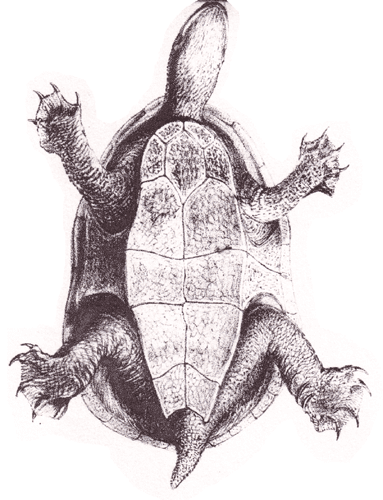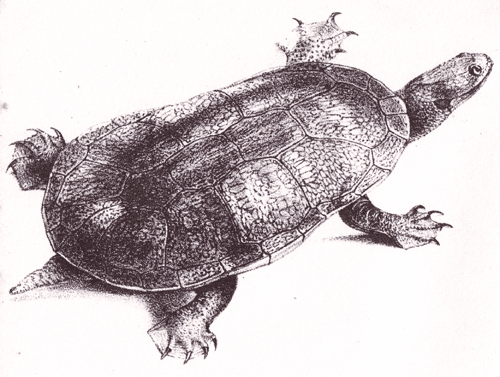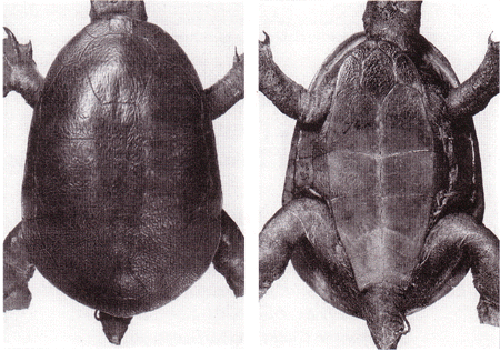|
Southwestern Snake-necked Turtle -- Chelodina (Macrodiremys) colliei by Jan Matiaska [1] Introduction Chelodina
colliei is very peculiar long-necked turtle because it is unique in
many ways. The species is endemic to the south-west part of Western Australia.
Thirdly, the species is the only member out of the Chelodina and
Macrochelodina genera to have well developed neural bones. It is
not only the species' uniqueness, but it is also the species' vulnerability,
that we should pay our attention to. The destruction of the species' natural
habitat, many road kills of turtles searching for either a nesting site
or a water body that does not dry out in summer, and natural predators are
main causes of the Chelodina oblonga population's decrease in numbers.
History The holotype B.M.N.H. 1947.3.5.89 from Western Australia was collected by John Gilbert (1812-1845) in 1839. John Gilbert was a collector hired by John Gould. In 1828, aged 16, he was recruited by Gould to work at the Zoological Society of London as a taxidermist before accompanying Gould to Tasmania in May 1838. After collecting for several months in Tasmania, Gilbert left for Western Australia. He reached Fremantle in the Comet in February 1839 and spent the next 11 months in Perth, also making significant trips into the country and to offshore islands with colonial botanist James Drummond and visiting German botanist Ludwig Preiss. Gilbert was killed by an Aboriginal spear in the neck while traveling on Ludwig Leichhardt's overland expedition to Port Essington. (Favenc, 1888)
| |||||||||||||||||||||||||||||||||||||
Bottom photo: Drawing of Chelodina oblonga (Gray, 1841)
 The original description made by Gray:
The original description made by Gray:
86. Chelodina oblonga, t. 7. - Shell oblong, rather contracted
in front, with a broad impression on the middle of the back; back olive
brown, with irregular anastomosing lines of the shields; beneath reddish-yellow.
The marginal plates longer than broad, the second larger than the first
and third; and rather angularly produced in the middle of the inner edge,
opposite the suture between the first dorsal and first costal plate; the
sternum high, flat, strongly and sharply keeled on the sides. Inhab. Western
Australia.
The species is at once known from Chelodina longicollis by the
form of its high, flat sternum, which is strongly keeled on the sides, and
by this part being of a uniform reddish colour, without any dark margin
to the plates; the hinder part of the sternum is only slightly concavely
truncated, and not deeply notched.
It is also known from that old well-known species by its oblong depressed
form, and by the form of the marginal plates, and especially from the second
and eleventh marginal plates on each side being placed more forwards, so
that the centre of their inner edge is opposite the suture of the first
and last costal plates with the dorsal ones; instead of their front margin,
as is the case with all the specimens of Chelodina longicollis
I have seen.
This species grows to a large size. Mr. Gould brought a specimen which he
gave to Mr. Bell, which is 11 inches long, and the neck is nearly equally
long, very thick, and studded with large warts; the head is broad and depressed,
covered with a thin skin, like a Trionix, and marked with small
thin scales.
The taxonomy of the species is still not defined. As for now, the species
is considered to belong to the Chelodina genus, but there is a lot of controversy
over the placement of this species as well as the type's identity.


